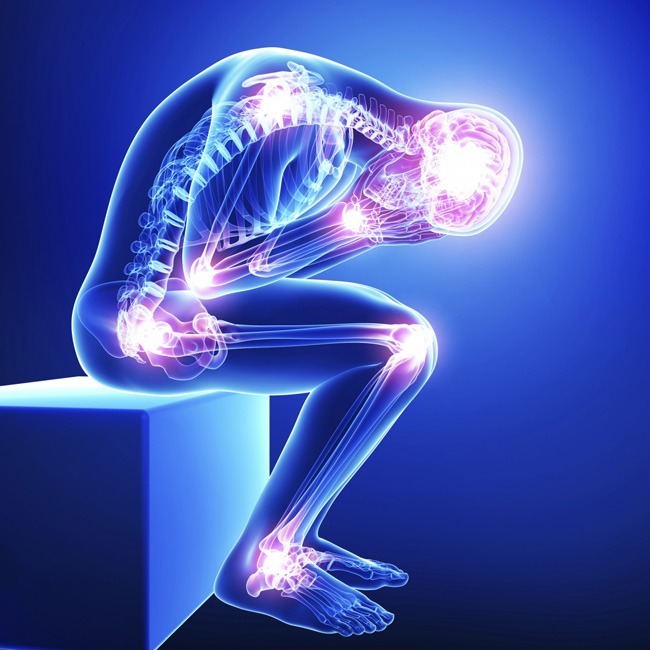Trend: Rethinking (and treating) chronic pain as a brain disease

Can stimulating the brain treat chronic pain? (Science Daily):
“We’ve published numerous brain stimulation papers over several years, and we always learn something important,” said senior author Flavio Frohlich, PhD, director of the Carolina Center for Neurostimulation and associate professor of psychiatry. “But this is the first time we’ve studied chronic pain, and this is the only time all three elements of a study lined up perfectly. We successfully targeted a specific brain region, we enhanced or restored that region’s activity, and we correlated that enhancement with a significant decrease in symptoms” …
Chronic pain is the leading cause of disability in the world, but there is not consensus among scientists that brain activity plays a causal role in the condition. Frohlich says the pain research field has focused largely on peripheral causes of chronic pain. For example, if you have chronic lower back pain, then the cause and solution lie in the lower back and related parts of the nervous system in the spine. But some researchers and clinicians believe chronic pain runs deeper, that the condition can reorganize how cells in the nervous system communicate with each other, including networks of neurons in the brain. Over time, the theory goes, these networks get stuck in a kind of neural rut, essentially becoming a cause of chronic pain.”
The Study:
Abstract: Chronic pain is associated with maladaptive reorganization of the central nervous system. Recent studies have suggested that disorganization of large-scale electrical brain activity patterns, such as neuronal network oscillations in the thalamocortical system, plays a key role in the pathophysiology of chronic pain. Yet, little is known about whether and how such network pathologies can be targeted with noninvasive brain stimulation as a nonpharmacological treatment option. We hypothesized that alpha oscillations, a prominent thalamocortical activity pattern in the human brain, are impaired in chronic pain and can be modulated with transcranial alternating current stimulation (tACS). We performed a randomized, crossover, double-blind, sham-controlled study in patients with chronic low back pain (CLBP) to investigate how alpha oscillations relate to pain symptoms for target identification and whether tACS can engage this target and thereby induce pain relief. We used high-density electroencephalography to measure alpha oscillations and found that the oscillation strength in the somatosensory region at baseline before stimulation was negatively correlated with pain symptoms. Stimulation with alpha-tACS compared to sham (placebo) stimulation significantly enhanced alpha oscillations in the somatosensory region. The stimulation-induced increase of alpha oscillations in the somatosensory region was correlated with pain relief. Given these findings of successful target identification and engagement, we propose that modulating alpha oscillations with tACS may represent a target-specific, nonpharmacological treatment approach for CLBP.
The Study in Context:
Focused ultrasound as emerging method of non-invasive neurotechnology
Good survey of brain stimulation methods, value and limitations


